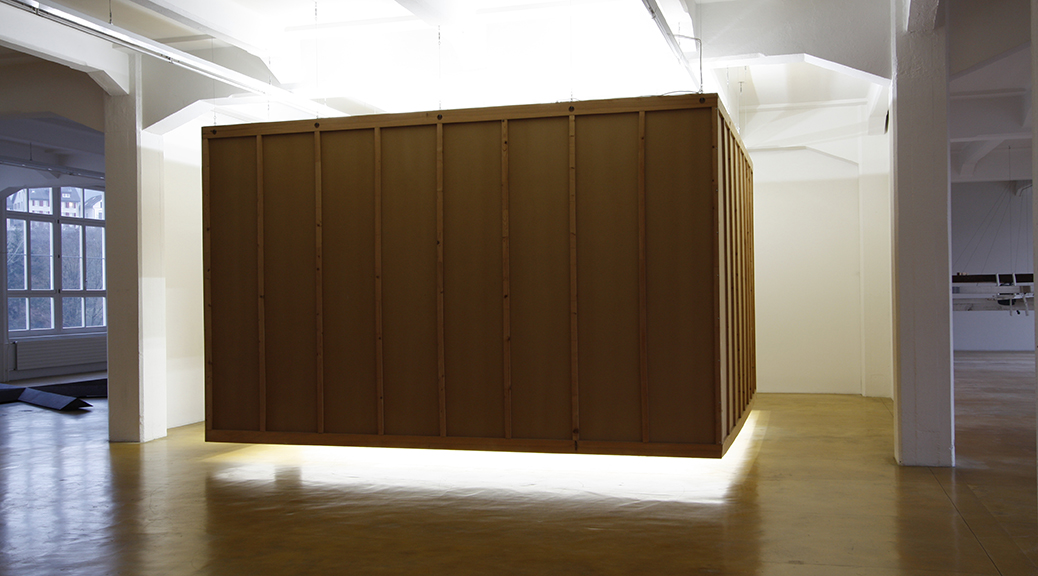Bruce Nauman
Floating Room: Lit from Inside, 1972
Der „schwebende Raum” wirkt von aussen wie ein aufgehängter Kubus – bis der Besucher die Eingangstür entdeckt. Sobald er die Schwelle überschritten hat, wird alles anders. Er befindet sich in einem zimmergrossen Raum, innen gleichmässig weiss gestrichen und hell erleuchtet, ohne einen einzigen Punkt, an dem sich sein Blick festhalten könnte. Sogar die Tür schliesst fest und grifflos. Und plötzlich fängt der Raum an zu flimmern, und seine Konturen beginnen sich aufzulösen. Die Wände sind keine festen Flächen mehr, und die eigene Position gerät ins Wanken. Der hängende Raum suggeriert einen Übergang von Wänden und Boden, wo keiner ist, und im Besucher, der längst ein Betroffener ist, wächst das Gefühl, es würde ihm die Sicherheit seines Standpunktes entzogen.
Kaum ein anderes Werk setzt so lapidar und präzise wie dieser „Floating Room” die Position des Kunstbetrachters ausser Kraft. Wir haben hier mit einem Faktum zu tun, das die Trennung zwischen Kunst und Welt, Kunst und Alltag, Kunst und Betrachter aufhebt. Das Ganze ist das Phänomen, und der Museumsbesucher ist ein Teil davon. Im Kontext der Kunstentwicklung verkörpert Naumans „schwebender Raum” einen fundamentalen Schritt zu einer Neuen Kunst.
Finden Sie den ausführlichen Text “Floating Room: Lit from Inside, 1972” (2017) von Christel Sauer auf unserer online Plattform Raussmüller Insights.Bruce Nauman
Floating Room: Lit from Inside, 1972
From the outside, the Floating Room seems to be a hanging cube – until the visitior discovers the entrance. When he passes the treshold, everything changes. He finds himself in an average sized room, painted uniformly in white and brightly lit, lacking a single point where he could fixate his gaze. Even the door closes firmly, without a doorknob. And suddenly the room begins to flicker and its contours begin to dissolve. The walls aren’t solid surfaces anymore; one’s own position begins to waver. The hanging room suggests transistions between the walls and the floor where none exist, and the visitor (who has long since become an affected party) begins to increasingly feel as though he is being deprived of security in his standpoint.
There is hardly a second work that disempowers the art observer’s position so succinctly and precisely like the “Floating Room”. We are dealing with a fact that suspends the division between art and world, art and daily life as well as art and the observer. The whole is the phenomenon, and the museum visitor is part of it. In the context of art’s development, Nauman’s “Floating Room” embodies a fundamental step towards a new art.
Read the extensive text “Floating Room: Lit from Inside, 1972” (2017) by Christel Sauer on our online platform Raussmüller Insights.
